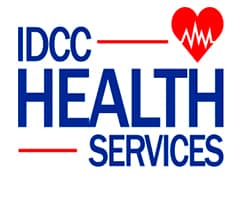Our heart is a remarkable organ, tirelessly pumping blood throughout our body. But did you know that when it comes to diagnosing and treating heart-related issues, cardiology isn’t just a one-size-fits-all discipline? Just as our heart has chambers, cardiology has distinct types. Let’s explore what these are and how they keep our heart beating.
Explore the world of cardiology. Our experienced team of Cardiology Doctors in Brooklyn is here to provide expert care in all three types of cardiology. Prioritize your heart health and schedule your consultation today.

1. Non-invasive Cardiology
What is Non-invasive Cardiology?
This branch of cardiology doesn’t involve inserting instruments into the body. Instead, it focuses on detecting and treating heart issues using external tests.
Common Procedures & Tests:
- Echocardiograms: These use sound waves to produce images of the heart.
- Electrocardiograms (ECG or EKG): This test measures the electrical activity of the heart.
- Stress Tests: These monitor the heart’s performance during physical exertion.
Why Opt for Non-invasive Cardiology?
It’s typically the first step in diagnosing heart problems, being risk-free and comfortable for the patient.
2. Invasive Cardiology
What is Invasive Cardiology?
This deals with the diagnosis and treatment of heart conditions using diagnostic tests that involve the insertion of needles, catheters, or other instruments into the body.
Key Procedures Include:
- Cardiac Catheterization: Helps diagnose heart conditions and assess the heart’s function.
- Angioplasty: A procedure to open narrowed or blocked blood vessels.
The Significance of Invasive Cardiology
While it might sound daunting, invasive cardiology can provide critical insights into heart health that non-invasive methods might miss.
3. Interventional Cardiology
What is Interventional Cardiology?
This is a specialized area of cardiology that treats heart diseases through catheters, rather than surgical procedures.
Examples of Interventional Cardiology Procedures:
- Stent Placement: To open blocked arteries.
- Balloon Angioplasty: To widen narrowed arteries.
- Valve Repair or Replacement: To ensure blood flows correctly through the heart.
Why is Interventional Cardiology Revolutionary?
These procedures are less invasive than surgery, meaning shorter recovery times and less risk for the patient.
Finding the Right Cardiologist in Brooklyn
Cardiology Doctors in Brooklyn, NY
Brooklyn is home to many skilled cardiologists. When looking for cardiology doctors in Brooklyn, NY, it’s essential to consider their specialization. Not all cardiologists practice all three types.
Exploring Cardiology in Downtown Brooklyn
For those living or working near the city center, cardiology downtown Brooklyn offers numerous reputable clinics and specialists.
Why Brooklyn?
Cardiology Brooklyn provides the perfect blend of expert care in a convenient location. With advanced medical facilities and experienced professionals, residents don’t need to travel far for top-tier heart care.
Conclusion:
Your heart’s health is of utmost importance. Knowing about the different types of cardiology ensures that if ever faced with a heart concern, you or a loved one can make an informed decision about where and how to seek treatment.
So, next time someone mentions they’re seeing a cardiologist, remember – it’s not just about stethoscopes and heartbeats. It’s a multifaceted discipline, each type as important as the next in keeping our hearts healthy and robust.
